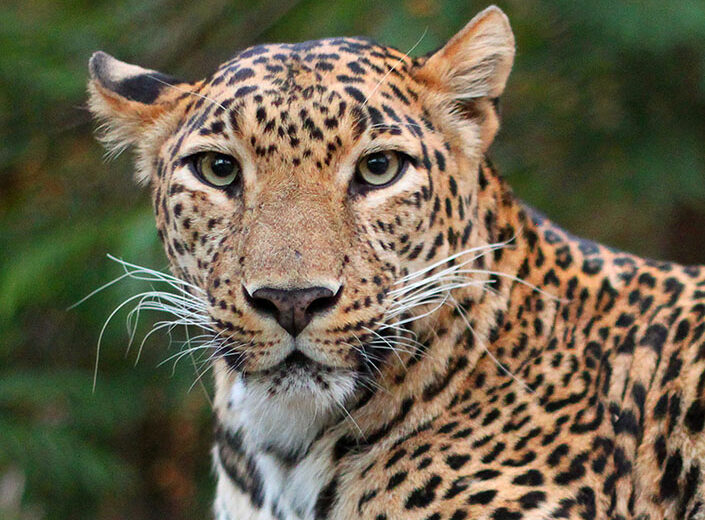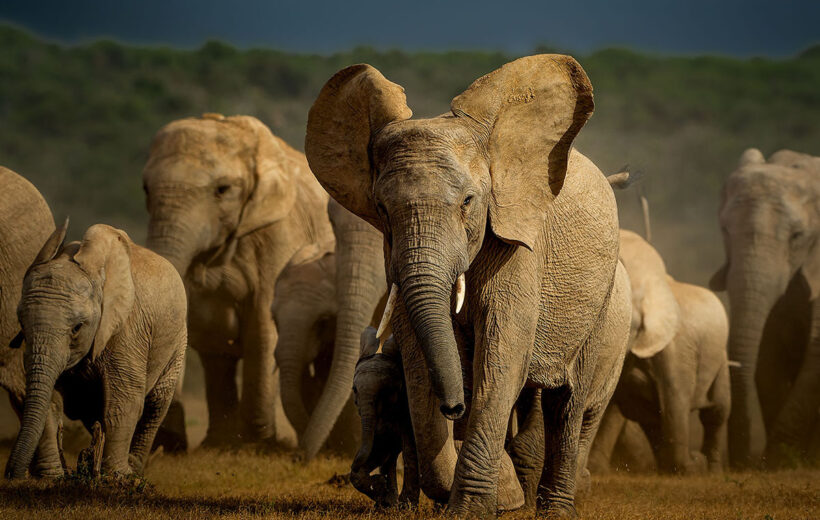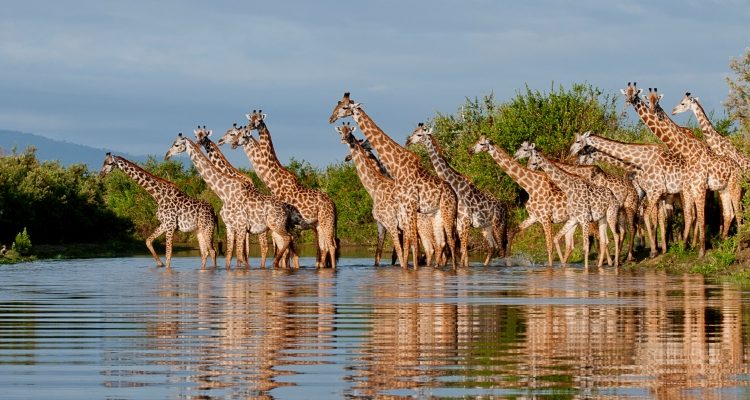Gombe National Park
Gombe National Park
Gombe Stream National Park is a small but remarkable national park located in western Tanzania, along the eastern shore of Lake Tanganyika. This park, with an area of approximately 56 square kilometers, is renowned for its unique environment and its pioneering chimpanzee research conducted by Dr. Jane Goodall.

Key features of Gombe National Park
1. Chimpanzee Sanctuary: Gombe Stream National Park is one of the best places in the world to observe wild chimpanzees. Dr. Jane Goodall's groundbreaking research on chimpanzee behavior, which began in the 1960s, helped reshape our understanding of these incredible primates. Visitors can join guided treks to observe the park's habituated chimpanzee communities, providing a unique opportunity to witness their natural behaviors up close.
2. Scenic Beauty: The park's landscape is characterized by lush forests, rolling hills, and the stunning backdrop of Lake Tanganyika, the world's second-deepest freshwater lake. The scenery is breathtaking, and the park offers excellent opportunities for hiking and enjoying the natural beauty.
3. Biodiversity: While chimpanzees are the main attraction, Gombe Stream National Park is also home to a variety of other wildlife, including red colobus monkeys, red-tailed monkeys, olive baboons, and an array of bird species. The park's diverse ecosystems provide habitats for a rich mix of flora and fauna.
4. Trekking and Hiking: Gombe offers several trails for trekking and hiking, allowing visitors to explore the park's lush rainforest, steep valleys, and rocky outcrops. Guided hikes range from short walks to more extended excursions, providing opportunities to spot wildlife and enjoy the natural environment.
5. Birdwatching: Bird enthusiasts will find Gombe Stream National Park to be a rewarding destination. The park is home to a variety of bird species, including African fish eagles, palm-nut vultures, and colorful turacos.
6. Lake Tanganyika: The park's western boundary is formed by the crystal-clear waters of Lake Tanganyika. Visitors can enjoy swimming, snorkeling, and boating activities in this vast and pristine freshwater lake. The underwater world of Lake Tanganyika is known for its incredible diversity of fish species.
7. Conservation Efforts: Gombe Stream National Park is not just a place of scientific research and tourism; it's also a hub for conservation efforts. The park plays a significant role in protecting chimpanzee populations and their habitat, as well as preserving the surrounding ecosystems.
Best Time to Visit
- Overview
- Things To Do
- Dry Season
- Chimpanzee Treaking
- Cultural Experiences
- Avoiding Crowds
- Accommodation
- How To Get There
The best time to visit Gombe Stream National Park in Tanzania largely depends on your preferences and what you aim to experience. Gombe Stream has distinct seasons, each offering unique opportunities. Here’s a breakdown of the best times to visit:
-
Dry Season (June to October):
- The dry season is considered the best time to visit Gombe Stream National Park. During this period, the weather is relatively dry and mild, with warm days and cool evenings.
- Chimpanzee trekking is often more comfortable, as the forest trails are less muddy and slippery, making it easier to navigate.
- Wildlife, including chimpanzees, tends to concentrate around water sources, providing excellent opportunities for observation.
- Birdwatching is also rewarding during the dry season.
-
Wet Season (November to May):
- The wet season can be an exciting time to visit Gombe Stream National Park, especially for those interested in lush, green landscapes and a more vibrant atmosphere.
- The forest comes alive with foliage and flowers, creating beautiful scenery.
- This is the best time for birdwatching, as migratory birds arrive, adding to the park’s avian diversity.
- However, it can be challenging to trek through the rain-soaked trails, and encounters with chimpanzees may be less predictable due to their wider dispersal in search of food.
- Rainfall is highest in the wet season, with the peak occurring from March to May.
-
Chimpanzee Habituation Experience (All Year):
- Gombe Stream National Park offers a unique chimpanzee habituation experience, allowing visitors to spend an extended period with a group of chimpanzees as they are habituated to human presence. This experience is available year-round but typically requires a more extended stay.
-
Mating Season (September to November):
- If you’re interested in observing chimpanzee mating behavior and social dynamics, visiting during the mating season can be fascinating. This period can offer insights into chimpanzee reproduction and social structures.
To decide on the best time for your visit, consider your specific interests. If you prioritize comfortable weather and easier chimpanzee trekking, the dry season is ideal. However, if you appreciate lush landscapes and birdwatching, the wet season can be a rewarding choice. Keep in mind that Gombe Stream National Park’s remote location and limited infrastructure mean that some activities and accommodations may have seasonal availability variations. Be sure to check with local tour operators or lodges for the most up-to-date information before planning your visit.
Gombe Stream National Park in Tanzania offers a range of activities and experiences for visitors interested in wildlife, nature, and adventure. Here are some of the things to do in Gombe National Park:
-
Chimpanzee Trekking: The highlight of Gombe National Park is chimpanzee trekking. Join experienced guides to track and observe wild chimpanzee communities as they go about their daily lives. Witness their social interactions, feeding habits, and playfulness.
-
Chimpanzee Habituation Experience: For a more immersive encounter, consider the chimpanzee habituation experience, which allows you to spend an extended period with a group of chimpanzees as they become accustomed to human presence. This experience provides a deeper understanding of chimpanzee behavior.
-
Hiking and Trekking: Gombe National Park offers a variety of trails that allow you to explore the park’s diverse landscapes, from dense rainforests to hilly terrain. Guided hikes provide opportunities to spot other wildlife and enjoy the natural beauty.
-
Birdwatching: The park is home to various bird species, including fish eagles, kingfishers, and turacos. Birdwatchers will find the park to be a rewarding destination, especially during the wet season when migratory birds arrive.
-
Swimming and Snorkeling: Lake Tanganyika, one of the world’s largest and deepest freshwater lakes, offers opportunities for swimming and snorkeling. Explore the clear waters and their diverse aquatic life.
-
Boat Safaris: Take a boat safari on Lake Tanganyika to enjoy scenic views of the shoreline and its wildlife. This is also a great way to access some of the park’s more remote areas.
-
Visit the Jane Goodall Research Center: Explore the research center, which showcases the history of Dr. Jane Goodall’s work in Gombe and the research conducted on chimpanzees. It provides valuable insights into the park’s scientific contributions.
-
Picnicking: Enjoy a picnic in the park, surrounded by the beautiful natural landscapes. Picnic sites are available for visitors.
-
Camping: For an immersive experience, consider camping within the park. Gombe Forest Lodge provides comfortable facilities for those who wish to stay overnight.
-
Interact with Local Communities: Engage with local communities near the park to learn about their culture, traditions, and way of life. This cultural exchange can be a valuable part of your visit.
-
Boat Ride from Kigoma: The journey to Gombe National Park often involves a scenic boat ride from Kigoma, a town located on the eastern shore of Lake Tanganyika. The boat trip is an adventure in itself, offering splendid views of the lake.
-
Environmental Education: Gombe National Park’s visitor center provides information about the park’s ecology, wildlife, and conservation efforts. Educational programs are conducted to raise awareness about chimpanzee protection and environmental conservation.
Gombe National Park is an extraordinary destination for those seeking to connect with nature, observe primates in their natural habitat, and explore the incredible biodiversity of this unique environment. Whether you’re a wildlife enthusiast, a nature lover, or an adventurer, Gombe National Park has something remarkable to offer.
For optimal game viewing, consider visiting during the dry season from late June to October. The animals congregate around water sources, making them easier to spot.
- For the best game viewing and wildlife sightings, consider visiting during the dry season, which typically runs from late June to October. During this time, the vegetation is less dense, and animals congregate around water sources, making them easier to spot.
- The dry season is also when predators are particularly active, as they take advantage of the concentrated prey.
-
Chimpanzee trekking in Gombe Stream National Park is a captivating and immersive experience that allows visitors to observe wild chimpanzees in their natural habitat. Gombe Stream, made famous by Dr. Jane Goodall’s pioneering research on these primates, is one of the few places in the world where you can have a close encounter with habituated chimpanzee communities. Here’s what you need to know about chimpanzee trekking in Gombe National Park:
1. Guided Treks: Chimpanzee trekking in Gombe National Park is led by experienced park rangers and guides who are familiar with the chimpanzee groups’ behaviors and movements. These guides ensure that the treks are safe and respectful of the chimpanzees and their environment.
2. Observing Chimpanzee Behavior: The primary goal of chimpanzee trekking is to observe and learn about the behaviors of these remarkable primates. Visitors have the opportunity to watch them feed, socialize, play, and interact with one another in their natural setting. It’s a unique chance to witness their complex social structures and intelligence up close.
3. Timed Encounters: Visitors are generally allowed to spend a limited time (usually around one hour) with a chimpanzee group during each trek. This helps minimize disturbances to the chimpanzees and helps control their exposure to human presence.
4. Trekking Difficulty: Trekking conditions can vary, from relatively easy walks to more challenging hikes through the forested terrain. The rugged landscape and hilly terrain may require some physical effort, so it’s advisable to be in good physical condition. Proper hiking attire and sturdy footwear are recommended.
5. Morning Treks: Chimpanzee treks usually take place in the morning, as this is when chimpanzees are most active and can be found feeding. It’s essential to arrive at the starting point early to maximize your chances of a successful encounter.
6. Conservation and Ethical Guidelines: Gombe National Park places a strong emphasis on conservation and responsible tourism. Guidelines and rules are in place to ensure the safety and well-being of both the chimpanzees and visitors. These include maintaining a safe distance, minimizing noise, and adhering to ethical behavior during the treks.
7. Seasonal Variations: Chimpanzee behavior and their distribution in the park can vary depending on the season and food availability. Therefore, the experience can differ between visits, making multiple visits to Gombe National Park an attractive option for enthusiasts.
8. Permits and Regulations: Visitors are required to obtain permits for chimpanzee trekking in Gombe National Park. These permits may have limited availability, so it’s advisable to book in advance through the park authorities or authorized tour operators.
Chimpanzee trekking in Gombe National Park provides a once-in-a-lifetime opportunity to connect with one of our closest relatives in the animal kingdom. The chance to witness their natural behaviors and engage in ongoing research and conservation efforts makes this an unforgettable and educational experience for those with a passion for wildlife and primates.
While Gombe Stream National Park is primarily known for its chimpanzee trekking and wildlife experiences, there are opportunities to engage in cultural experiences in the surrounding areas. Here are some ways to incorporate cultural interactions into your visit to Gombe National Park:
-
Visit Local Villages: The communities living in the vicinity of Gombe National Park are primarily composed of ethnic groups such as the Wahha and Wavinza. Arrange guided visits to these local villages to interact with residents and learn about their way of life. You can observe traditional customs, housing, and farming practices.
-
Cultural Workshops: Some tour operators and lodges offer cultural workshops, where you can participate in traditional activities such as pottery, basket weaving, or cooking. This hands-on experience allows you to gain insights into the local culture and artisanal skills.
-
Traditional Dance and Music Performances: On special occasions or by arrangement, local cultural groups may perform traditional dances and music. These performances showcase the vibrant rhythms and movements that are an integral part of the local culture.
-
Traditional Healers: Learn about traditional healing practices and the use of medicinal plants in the local communities. Some villages have traditional healers who are willing to share their knowledge about herbal remedies and their cultural significance.
-
Cultural Markets: If your visit coincides with local markets, you can explore them to see the trading of goods and agricultural products. This provides an opportunity to interact with local vendors and purchase handcrafted items or local produce.
-
Cultural Food Tastings: Savor traditional Tanzanian dishes and specialties prepared by local communities. This culinary experience allows you to sample the flavors of the region and gain an appreciation for the local cuisine.
-
Homestays: Consider staying with local families for an immersive cultural experience. Homestays provide a firsthand look at daily life, traditions, and the warmth of Tanzanian hospitality. It’s an excellent way to engage with the local community.
-
Respect and Sensitivity: When engaging in cultural experiences, it’s crucial to show respect and sensitivity to local customs and traditions. Seek permission before taking photographs and respect the privacy of community members.
The cultural experiences in the Gombe National Park area are enriching and offer a deeper understanding of the local culture and way of life. Interacting with the people who live in this region provides an opportunity to appreciate the human aspect of the environment and its connection to conservation and wildlife protection.
Gombe Stream National Park is a relatively small and remote park, and while it may not be as crowded as some other wildlife destinations, there are still strategies you can use to enhance your experience and minimize encounters with other visitors:
-
Choose the Right Time to Visit: Gombe National Park is less crowded during the low season, which is typically during the wet season (November to April). While the weather can be less predictable, you’ll have a more private experience with the chimpanzees and other wildlife.
-
Weekday Visits: Plan your visit for weekdays if possible. Weekends can be slightly busier with local and domestic tourists.
-
Arrive Early: Begin your day early by arriving at the park gates when it opens. This increases your chances of being one of the first visitors on the trails and encountering wildlife in a more tranquil setting.
-
Plan for Longer Stays: Consider an extended visit, spending more days in the park. This allows you to schedule your activities to avoid peak visitor times and have more exclusive wildlife encounters.
-
Chimpanzee Habituation Experience: The chimpanzee habituation experience, which lasts several hours, may offer a quieter and more intimate encounter compared to regular chimpanzee trekking.
-
Private Tours: Opt for private or customized tours if your budget allows. These tours provide a more personalized experience and flexibility in setting your own itinerary.
-
Mid-Morning Departures: If you’re not an early riser, consider scheduling your activities to begin in the late morning when other visitors might be heading back from their morning treks.
-
Alternative Trekking Routes: Ask about alternative or less frequented trekking routes within the park. Some areas may have fewer visitors, providing a quieter experience.
-
Respectful Behavior: Maintain respectful behavior during your visits, including keeping noise to a minimum and following the park’s rules and guidelines. This will also contribute to a quieter and more respectful atmosphere within the park.
-
Educational Activities: Participate in educational activities, such as the visitor center exhibits or environmental talks, during peak visitor times to minimize congestion on the trails.
-
Stay Inside the Park: Consider staying in accommodations within the park boundaries. Gombe Forest Lodge offers a comfortable stay within the park, which means you’ll be closer to the trekking starting points and can plan your activities more flexibly.
-
Check Local Events: Be aware of local events, holidays, and school vacation periods that might attract larger crowds to the park and plan your visit accordingly.
While Gombe National Park doesn’t experience the same level of overcrowding as some other safari destinations, these strategies can help you make the most of your visit and enjoy a more peaceful and personal connection with the chimpanzees and the park’s natural beauty.
Accommodation options in Gombe Stream National Park are limited due to the park’s remote location and focus on preserving its pristine environment. However, there is one lodging option within the park itself:
Gombe Forest Lodge:
- Gombe Forest Lodge is the primary and most well-known accommodation in the park. It offers a comfortable and eco-friendly place to stay while you explore Gombe National Park. The lodge provides a range of amenities, including en-suite cottages and bungalows with private balconies offering panoramic views of Lake Tanganyika.
- Accommodations at the lodge are nestled within the lush forest, providing an immersive and secluded experience. Each room is equipped with comfortable furnishings and modern facilities.
- The lodge offers a restaurant serving a variety of dishes, often featuring fresh fish from Lake Tanganyika. You can enjoy your meals while taking in the stunning lake views.
- Guided chimpanzee trekking and other park activities are easily accessible from Gombe Forest Lodge, as it is located within the park’s boundaries.
- Keep in mind that this lodge has limited availability, so it’s essential to book well in advance to secure your stay.
While Gombe Forest Lodge is the primary option for accommodation within the park, other lodging choices can be found in nearby towns like Kigoma, where you may find additional hotels and guesthouses. These accommodations are not within the park itself but are a boat ride away from Gombe National Park’s entrance.
Staying within or near Gombe Stream National Park provides a unique opportunity to immerse yourself in the lush and remote surroundings, enhancing your overall experience of chimpanzee trekking and wildlife observation in this historic and scientifically significant destination. Remember to book your accommodation and permits well in advance to ensure a seamless and memorable visit to this exceptional national park.
Getting to Gombe Stream National Park, located on the shores of Lake Tanganyika in western Tanzania, requires a combination of travel by air, land, and water due to its remote location. Here’s how to get to Gombe National Park:
1. International Flight: Start by booking an international flight to Julius Nyerere International Airport (DAR) in Dar es Salaam, Tanzania, or Kilimanjaro International Airport (JRO) near Arusha. These are the primary international airports in the country.
2. Domestic Flight: From Dar es Salaam or Kilimanjaro, you’ll need to book a domestic flight to Kigoma Airport (TKQ), which is the nearest airport to Gombe National Park. Kigoma is the largest town near the park and serves as the gateway to the region.
3. Arrival in Kigoma: Upon arrival at Kigoma Airport, you’ll need to travel to the town of Kigoma, which is situated on the eastern shore of Lake Tanganyika. This town will be the starting point for your journey to Gombe National Park.
4. Boat Ride to Gombe National Park: Gombe National Park is accessible by boat from Kigoma. The park’s entrance is located on the shores of Lake Tanganyika, and you can take a boat ride from Kigoma to the park.
Boat Transfer Options:
- Public Ferry: There is a daily public ferry service between Kigoma and Gombe National Park. This service can be a more budget-friendly option, but it may not always operate on a strict schedule.
- Private Boat Charter: Many tour operators offer private boat charters, which provide more flexibility in terms of timing and the type of boat used. This option is often more convenient for travelers, especially when coordinating with their lodge or accommodations.
5. Park Permits and Fees: Before your arrival at Gombe National Park, ensure you have the necessary park permits for chimpanzee trekking and any other activities you plan to engage in. Permits should be arranged in advance through the park authorities or authorized tour operators.
Accommodations: If you plan to stay within the park, Gombe Forest Lodge is the primary accommodation option. However, you can also find other lodging in Kigoma, which is a short boat ride away from the park’s entrance.
It’s essential to plan your trip well in advance, especially for obtaining permits, booking accommodations, and coordinating boat transfers. Gombe Stream National Park’s remote location and limited infrastructure make preparation crucial to ensure a smooth and enjoyable visit to this unique chimpanzee habitat and beautiful natural area.






